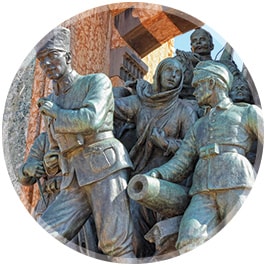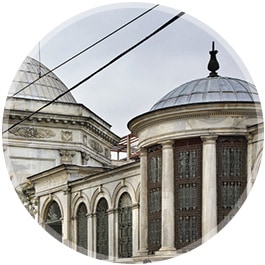
Aga Mosque
Built by Hussein Aga at the end of the 16th century, Aga Mosque is in Beyoglu province and stands out with its location near Istiklal Street. Its garden hosts a very valuable monument, a fountain designed by Architect Sinan.
Ahrida Synagogue
A harmony of brick and stone walls, Ahrida Synagogue was built in the 15th century. As the largest synagogue of Istanbul, Ahrida is likened to Ottoman galleys or Noah’a Ark by various beliefs.


Aqueduct of Valens
Known in Turkish as Bozdogan Aqueduct, the Aqueduct of Valens is built at the 4th century by the Roman Emperor, Valens. Repaired several times during Ottoman Empire era, it is one of the most important historical monuments of Istanbul today.






































